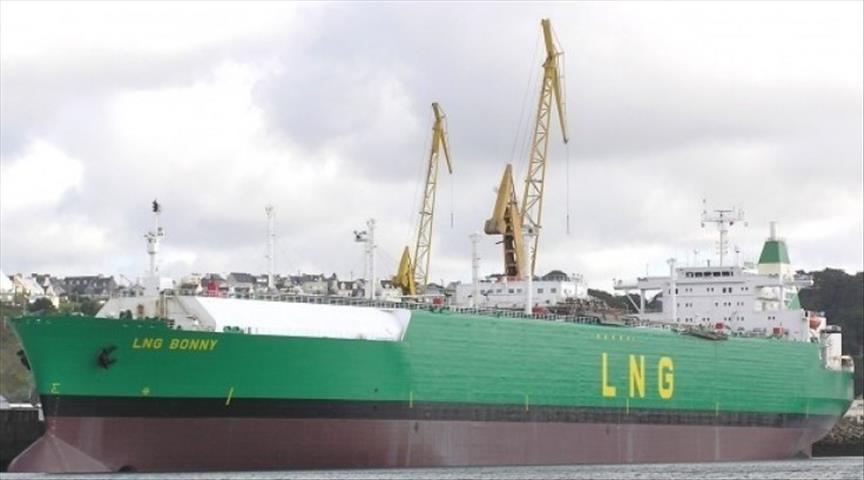��
Liquefied natural gas��exporters in the U.S. need high oil and low natural gas prices to have a competitive advantage in the natural gas markets worldwide, said��an expert from U.S. Federal Reserve Bank Sunday.��
"When oil prices are high and natural gas prices are low, U.S. producers who can export LNG are at a competitive advantage,"��Mine Yücel, senior vice president and director of Research at FED of��Dallas, told��Anadolu Agency.��
Yucel explained that��natural gas prices are still linked to oil prices in Europe and Asia, and��stressed��when oil prices are high,��natural gas prices are also high in those regions.
The U.S. natural gas prices are relatively low in comparison to��the rest of the world. The cost of��Henry Hub��in the second week of May was��around $2.8 million British thermal unit,��mmbtu,��however oil prices for this period were��also 50 percent lower��compared to��June 2014.��
"Now oil is down 50 percent, and that lowers the price of natural gas in Europe and Asia. So, the competitive advantage for the U.S. is much narrower," Yücel explained.����
"This is one of the reasons why not all permitted LNG plants are starting construction right away," she added.
There are currently only six LNG terminals that have been granted approvals from the U.S. Energy Department to export LNG to countries that the U.S. does not have a Free Trade Agreement, FTA, with.��
"The energy industry has been complaining that approvals of LNG exports terminals have been very slow. However, it has become somewhat faster last year and this year so far," Yücel said.
- Approved projects in the U.S. to export LNG
Recently, the U.S. government has sped up LNG permits by approving two projects in less than a week.��
On Tuesday,��Cheniere Energy's��Corpus Christi Liquefaction Project��in the U.S. state of Texas became the sixth��project to be��approved. The project will export LNG up to the equivalent of 2.14 billion��cubic feet (63 million cubic meters) of natural gas per day for a period of 20 years.��
On May 7, Dominion Resources' Cove Point LNG project in the state of Maryland gained approval from the energy department to export 0.77 billion cubic feet (23 million cubic meters) of natural gas per��day for a period of 20 years.
"However, approved permits does not mean the plants will be built," Yücel warned.��
"Building LNG facilities takes time and they are very expensive. That's why we won’t see a flood of U.S. natural gas exports on the market immediately," she added.
Cheniere Energy's��Sabine Pass plant will become the earliest project to be completed to export LNG,��at the end of this year or beginning of next year, while��they are fully contracted out for the next 20 years, Yücel informed.
The project in the state of Louisiana��was the first project to acquire an LNG export permit in 2012��to potentially export 2.76 billion cubic feet (83 million cubic meters) per day.��
"As U.S. gas comes into the market, we will eventually see a global gas market," Yücel said.��
"Europeans and Asians are talking about delinking natural gas and oil prices.��So, maybe, in five��years, we will have a global gas market, like we have in oil," she��concluded.����
The Freeport��LNG��terminal in Quintana Island, Texas was��authorized on Nov. 14, 2014 to export��LNG��for a total volume of 1.8 billion cubic feet (54 million cubic meters)��per day for a period of 20 years.��
Moreover,��Carib Energy’s facility in Florida and��Sempra Energy’s Cameron��LNG��facility in Louisiana were approved on Sept.��10, 2014.
Sempra Energy's Cameron��LNG��terminal��in Cameron Parish, Louisiana was��authorized to export��up to some��1.7 billion cubic feet (51 million cubic meters) per day��of natural gas for a period of 20 years, while��Carib Energy's facility��in Martin County, Florida was��authorized to export up to some��0.04 billion cubic feet (1.2 million cubic meters) per day��for a period of 20 years.��
The companies that want to export LNG from the U.S. to non-FTA countries��need to get approval from the Department of Energy, which grants authorizations unless the proposed gas exports "are not consistent with the public interest."
With the shale boom in 2008, the U.S. has significantly raised its shale gas production, from 2 trillion��cubic feet (57��billion cubic meters) in 2008 to 11.4 trillion��cubic feet (323��billion cubic meters) in 2013, according to the U.S.' Energy Information Administration.
By Ovunc Kutlu
Anadolu Agency
��


